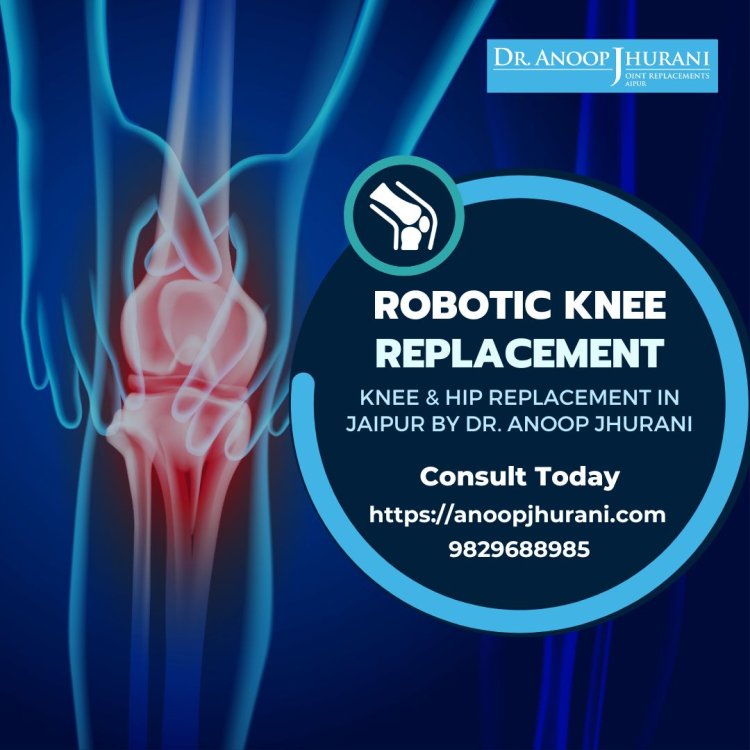The Benefits and Recovery of Robotic Partial Knee Replacement
Dr. Anoop Jhurani is one of the knee & hip replacement doctors in Jaipur. He has performed over 12,000 successful knee and hip surgeries.
Share this Post to earn Money ( Upto ₹100 per 1000 Views )

In the realm of orthopedic advancements, robotic partial knee replacement stands out as a beacon of hope for individuals seeking targeted relief from knee issues. This innovative procedure offers a multitude of benefits, coupled with a streamlined recovery timeline that allows patients to reclaim their mobility and resume their favorite activities.
Benefits of Robotic Partial Knee Replacement:
1. Precision Redefined: Robotic assistance in partial knee replacement brings a level of precision that surpasses traditional approaches. Surgeons can target the affected area with unparalleled accuracy, preserving healthy tissue and promoting optimal joint function.
2. Conservation of Healthy Bone and Tissue: Unlike total knee replacement, which involves replacing the entire knee joint, partial knee replacement focuses solely on the damaged compartment. This conserves healthy bone and tissue, contributing to a more natural feel and potentially faster recovery.
3. Minimally Invasive Approach: Robotic partial knee replacement often follows a minimally invasive approach, involving smaller incisions compared to traditional surgery. This results in less trauma to surrounding tissues, reduced scarring, and a quicker return to daily activities.
4. Accelerated Recovery: The targeted nature of robotic partial knee replacement contributes to an accelerated recovery process. Patients may experience less postoperative pain, reduced swelling, and a faster return to functional mobility.
5. Optimized Joint Functionality: By precisely addressing the affected compartment, robotic partial knee replacement aims to optimize joint functionality. This can lead to improved range of motion, enhanced stability, and a more natural gait for patients.
Recovery Timeline for Robotic Partial Knee Replacement:
1. Initial Weeks: In the immediate postoperative period, patients are typically issued a cane to facilitate greater independence. The first few weeks focus on managing pain and initiating outpatient rehabilitation to promote joint mobility.
2. 3 to 6 Weeks: Most patients find themselves on the path to recovery within 3 to 6 weeks after robotic partial knee replacement. During this period, they gradually resume regular activities and may notice significant improvements in joint function.
3. 6 to 10 Weeks: Around the 6 to 10-week mark, patients who have completed physical therapy often find themselves ready to reintegrate into more strenuous activities, including sports. The targeted nature of the surgery contributes to a swifter return to favorite pastimes.
4. Pain Management: While pain management is a crucial aspect of recovery, many patients can discontinue the use of painkillers within 1 to 2 weeks post-surgery. This reflects the success of the procedure in minimizing discomfort and promoting a smoother recovery.
Embracing a Revitalized Lifestyle:
Robotic partial knee replacement emerges as a solution to knee issues and a catalyst for embracing a revitalized lifestyle. The amalgamation of precision, minimally invasive techniques, and an accelerated recovery timeline positions this innovative procedure as a transformative force in orthopedic care. As patients navigate the journey from Dr. Anoop Jhurani to restored mobility, the benefits of robotic partial knee replacement pave the way for a future filled with activity, comfort, and an enhanced quality of life.
















